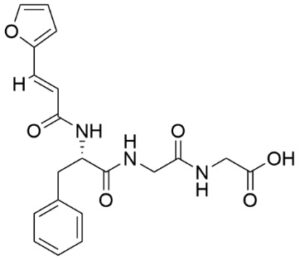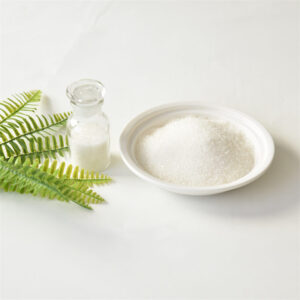Products
With an outstanding track record and unwavering commitment to excellence, they consistently deliver the highest quality products to various industries.
FAPGG(CAS 64967-39-1)
FAPGG, with CAS number 64967-39-1, is a synthetic compound used in biochemical and molecular biology research. It is often used as a substrate for enzymes, particularly in enzymatic assays and studies related to proteases and amidases.
Products Description
FAPGG(CAS 64967-39-1)

| Product Name: | FAPGG |
| CAS No.: | 64967-39-1 |
| Molecular formula: | C20H21N3O6 |
| Molecular weight: | 399.4 |
| Purity: | ≥98% |
| Description: | FAPGG(N-[3-(2-Furyl)acryloyl]-Phe-Gly-Gly) is a substrate for the continuous sprectrophotometric assay of ACE. |
FAPGG, with CAS number 64967-39-1, is a synthetic compound used in biochemical and molecular biology research. It is often used as a substrate for enzymes, particularly in enzymatic assays and studies related to proteases and amidases. Here’s a brief description:
- Chemical Structure: FAPGG is a peptide substrate with a specific chemical structure. The acronym FAPGG stands for N-[3-(2-furyl)acryloyl]-L-phenylalanylglycylglycine, which describes the chemical components of the compound.
- Substrate: FAPGG is utilized as a substrate for certain enzymes, especially proteases and amidases. When these enzymes are active, they cleave FAPGG into smaller molecules, and the reaction can be monitored and quantified, making it useful for enzyme activity assays.
- Enzymatic Assays: FAPGG is employed in enzymatic assays to study the activity of various enzymes, particularly those that are capable of cleaving peptide bonds. By measuring the rate of substrate cleavage, researchers can assess enzyme activity and kinetics.
- Research: FAPGG is commonly used in research related to enzyme biochemistry, drug discovery, and the study of various biological processes that involve enzymatic reactions.
- Safety: When working with FAPGG, proper safety precautions and handling guidelines should be followed to ensure safe laboratory practices.
Leave us a message
Reated Products
Related products
-
Pharmaceutical Intermediates
2-Phenyl-1-(4-(4,4,5,5-tetramethyl-1,3,2-Dioxaborolan-2-yl)Phenyl)-1H-Benzo[d]imidazole (CAS 1169709-19-6)
Read more



![2-Phenyl-1-(4-(4,4,5,5-tetramethyl-1,3,2-Dioxaborolan-2-yl)Phenyl)-1H-Benzo[d]imidazole (CAS 1169709-19-6)](https://ranhangchem.com/wp-content/uploads/2023/11/2-Phenyl-1-4-4455-tetramethyl-132-Dioxaborolan-2-ylPhenyl-1H-Benzodimidazole-CAS-1169709-19-6-300x300.jpg)

